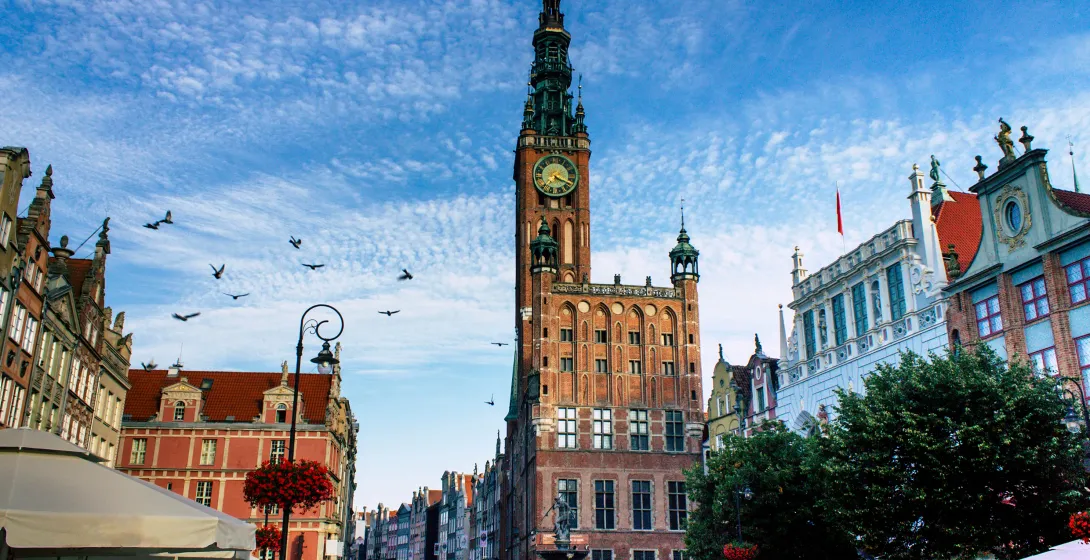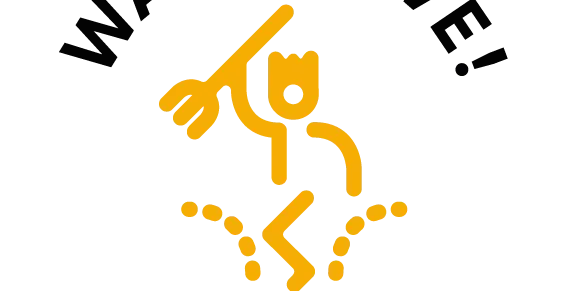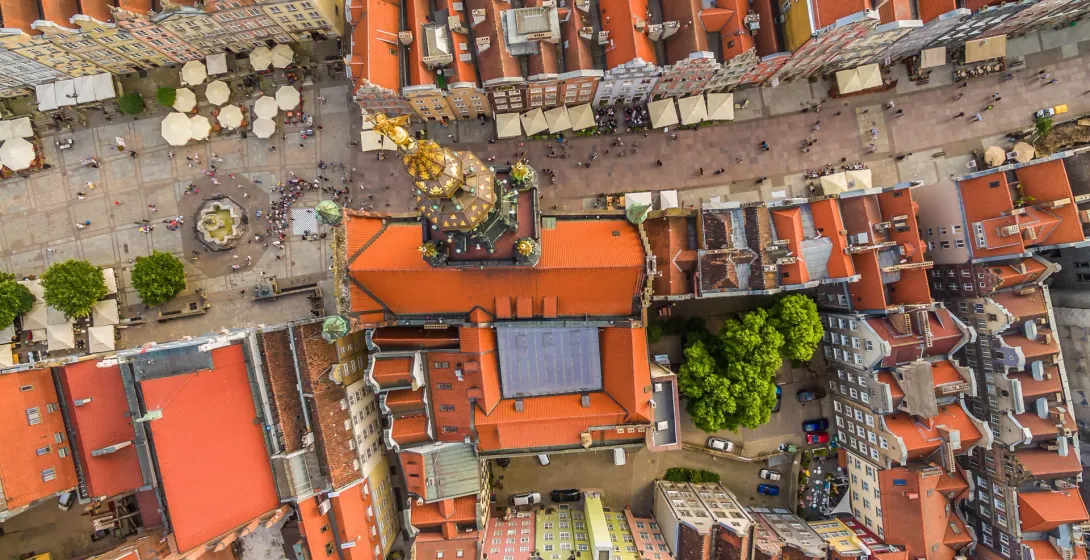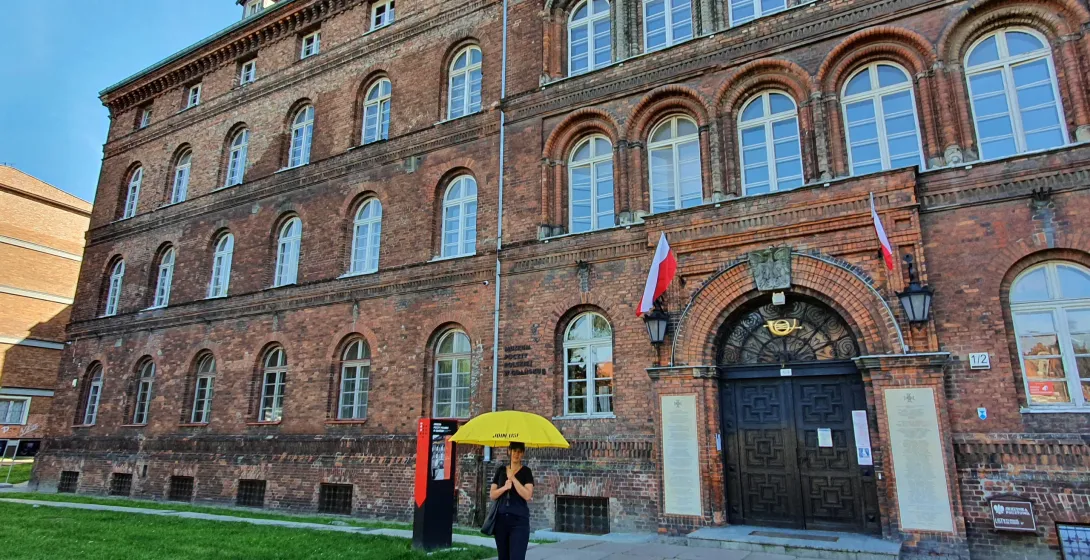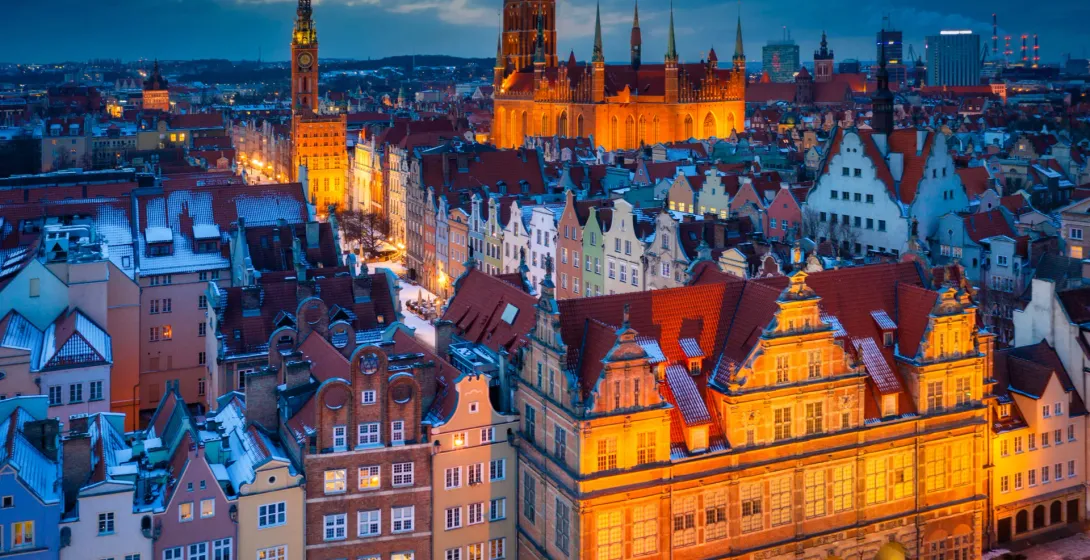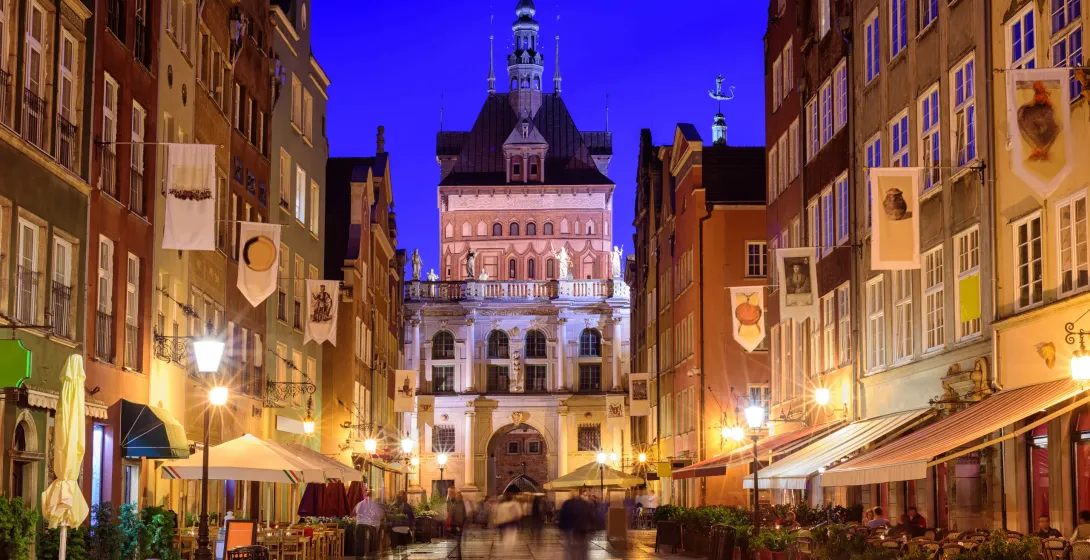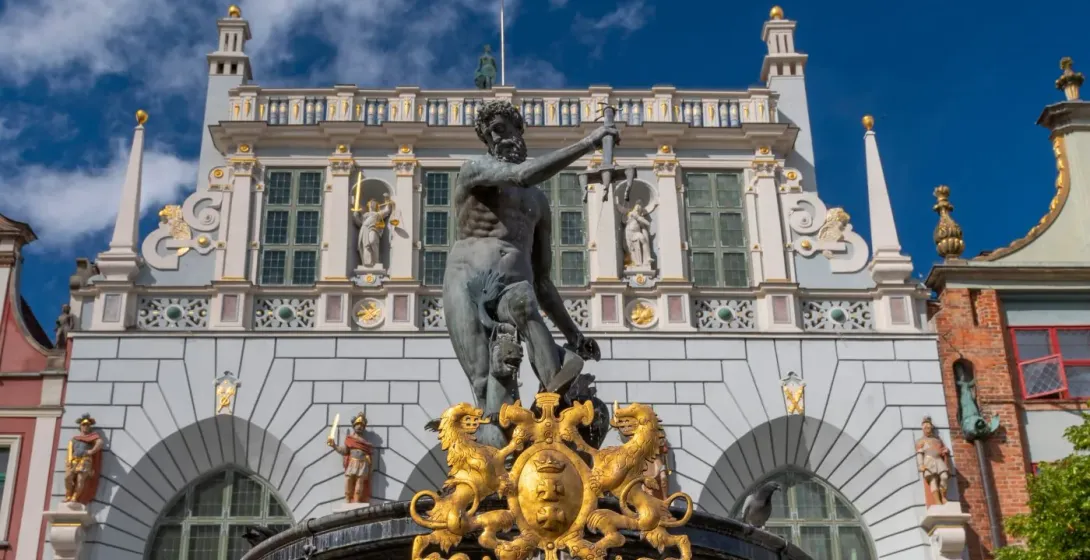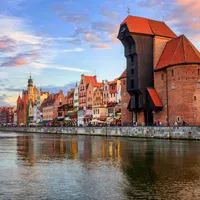Gdańsk Main Town Walking Tour: History & Landmarks
Introduction to Gdańsk’s history and culture in the Main Town, from Baltic trade and the Free City era to the outbreak of WWII. See the Golden Gate, St. Mary’s Basilica, and Arthur’s Court before finishing at the Old Harbor with the Crane and the Polish Post Office.
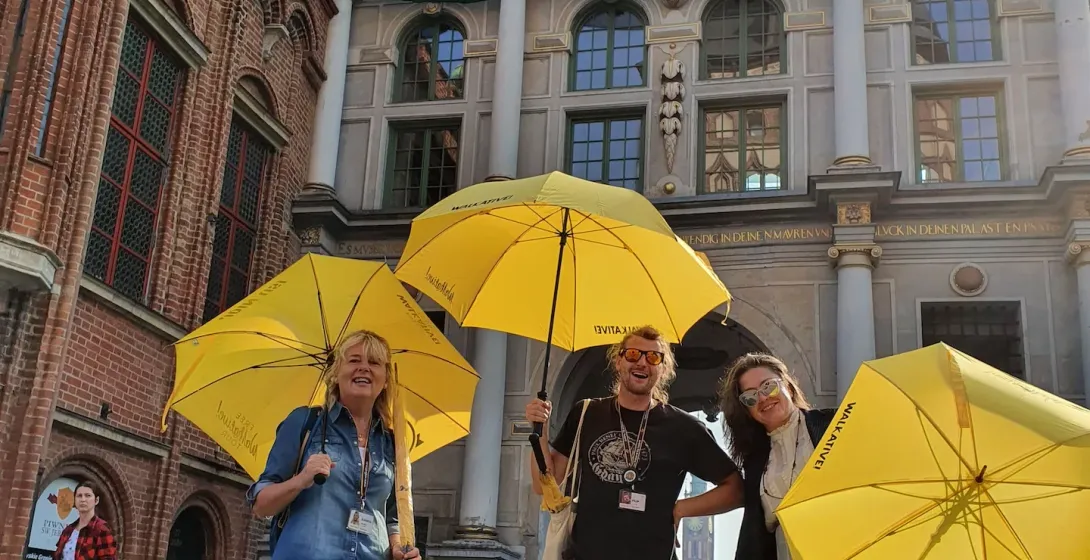
Basic Information
Total time
2h 30m
Language
English, Polish, German, Spanish (check the calendar for availability)
Price
Our “Pay What You Wish” tours don’t have a fixed price — you decide how much the experience was worth. At the end of the tour, please make a fair contribution that reflects your satisfaction and appreciation for your guide’s work. Most guests give between €10 and €50 per person.
Meeting point
Square at the Golden Gate (Złota Brama) Nearest public transport: Gdańsk Śródmieście SKM stop, Brama Wyżynna tram and bus stop; Okopowa tram stop
Attention: during the Christmas Market in Gdańsk (21st November – 23rd December), meeting point for the afternoon Main Town and Nazi Terror tours is moved to the EASTERN side of the Golden Gate (city side – where there are no stalls and less noise). Please look for our yellow umbrella.
Additional info
☂︎ This tour is organised by Walkative Gdańsk guides. Look for the guide with the yellow umbrella.
❗Our tours run in all weather conditions. High or low temperatures, rain, or snow are never a reason for us to cancel. We’re always here for you! The only reasons for cancellation are extreme weather conditions (such as heavy storms), a guide’s sudden illness, or if there are fewer than 5 registered participants. In such cases, we will always notify you using the contact information you provided when booking the tour.Booking rules
Booking is obligatory. Our “Pay What You Wish” tours are meant for individual travellers and small groups. Large groups (8 or more people) cannot join these tours, as they significantly affect the experience for others and the guide. For school trips, organised tours, or groups of friends, please book our paid option (18€ per person) or arrange a Private Tour. For more information or to schedule a group visit, please contact us directly.
About the tour

Gdańsk, Gdanzc, Dantzk, Danzig… whatever it was called, it always symbolized the same thing – the proud, wealthy, independent, beautiful pearl of the Baltic Sea. Its character, visible until today, was shaped by gold and vanity. Wealthy merchants came here from all corners of Europe and simply considered themselves citizens of Gdańsk – Danzigers.The source of the city’s prosperity was its perfect location. Established in the 10th century, over time it became the largest city of the Polish-Lithuanian Commonwealth and the biggest harbor on the Baltic Sea, supplying Europe with Polish grain, timber, and “Baltic gold” – amber. The city was the birthplace of Daniel Fahrenheit, Arthur Schopenhauer, and Günter Grass. Napoleon once said, “Gdańsk is the key to everything,” and created the first Free City of Danzig. Much later, the second Free City of Danzig was intended by Adolf Hitler to become the home of the Nazi movement. World War II – the world’s largest military conflict – began right here on 1 September 1939. It was also here in Gdańsk that the shipyard workers’ strike led by Lech Wałęsa heralded the beginning of the end of communism in this part of Europe.Come join us for a walk through the cobbled streets of the Main Town, filled with elegant, slender buildings and charming terraces. Visit the biggest brick church in the world, see the largest crane in medieval Europe, and listen to the fascinating history of the City of Freedom. PRIVATE TOUR The last point is near to Monument to the Defenders of the Polish Post Office. Location: https://goo.gl/maps/Rbmy7JwXfbr4EcwQ9.After the Main Town tour we strongly recommend taking our Nazi Terror to talk about the dark WW2 days and Gdańsk Shipyard Uncovered tour to talk about the cradle of “Solidarity” movement and a fight that eventually brought communism to an end in Europe.
Highlights
- 1
Uplands & Golden Gates
The grand historical entrance to the city's Royal Route, once welcoming Polish kings and guests.
- 2
Prison Tower
Part of the medieval fortifications which once housed a notorious torture chamber and city dungeon.
- 3
Great Armory
An ornate 17th-century building that once served as the city's impressive main arsenal.
- 4
Main Town
The historic heart of Gdańsk, with cobbled streets, elegant buildings, and charming terraces.
- 5
St. Mary's Basilica
One of the world's largest brick churches, dominating the city skyline with its massive tower.
- 6
Arthur's Court
A former meeting place for the city’s wealthy merchants and a centre of social life.
- 7
The Crane
The largest port crane in mediaeval Europe, a powerful symbol of Gdańsk's trading history.
Map
Square at the Golden Gate (Złota Brama) Nearest public transport: Gdańsk Śródmieście SKM stop, Brama Wyżynna tram and bus stop; Okopowa tram stop
Attention: during the Christmas Market in Gdańsk (21st November – 23rd December), meeting point for the afternoon Main Town and Nazi Terror tours is moved to the EASTERN side of the Golden Gate (city side – where there are no stalls and less noise). Please look for our yellow umbrella.

